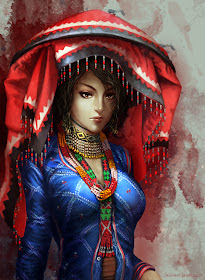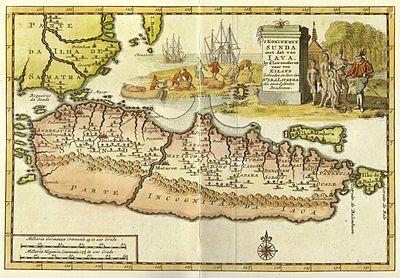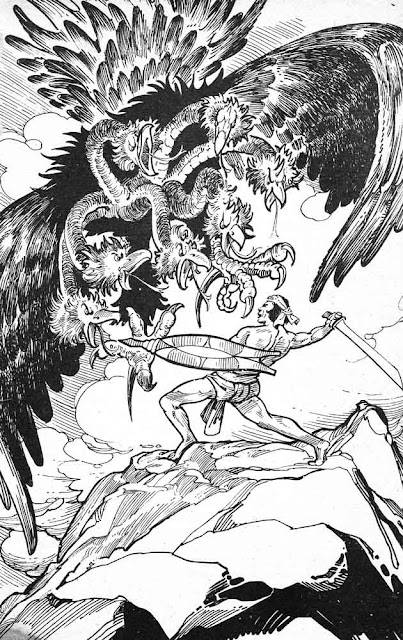WHERE IS ZEBU OR ZUBU?
The following is a translation from Spanish of the article entitled, "Reino de Zabag", which would help us give a clearer location of the place mentioned by Antonio Pigafetta as Zebu or Zubu in his chronicle, "A Voyage Around The World".
Kingdom of Zabag
Zabag (Indonesian: Sabak; Chinese: 阇婆 or 闍婆 "She-bó", "Shepo"; Sanskrit: Javaka; Arabic: الزابج "Zabaj") is believed to have been an ancient kingdom located in southern China somewhere in the Southeast Asia, between the Kingdom of Chenla (now Cambodia) and Java. Studies established by various historians associated this kingdom with Srivijaya and thought its location to be somewhere in Sumatra, Java, or the Malay Peninsula.[1] The Indonesian historian suggested that Zabag is connected to the current area of Muara Sabak, the estuary of the Batang Hari River in East Tanjung Jabung Regency, Jambi province.[2] Zabag may also be located in Java, not Srivijaya because Zabag is noted to annex Srivijaya, and the size of Zabag is only half the size of an island called Ramni (Sumatra).[3](p30-31) However, its exact location is still the subject of debate among scholars. Other possible locations such as North Borneo and the Philippines are also suggested.[4]
The main source of the existence of the kingdom of Zabag was revealed by a Persian sailor named Sulaiman al-Tajir al-Sirafi, known as Sulaiman the Merchant, in his book "Rihlah As-Sirafiy" (The Voyage of As-Sirafi) recorded his trip to India, porcelain and the Zabaj islands in the period 851 AD Following are excerpts from Sulaiman al-Tajir al-Sirafi's journey:[3](p30-31)
Then we will discuss the city of Zabaj, which separates [Arab] from China. Between the two [Zabaj and China] you can get there by sea for a month, or less if the wind is good; it is said to be around 900 farsakh. The king is known as "maharaja" (''al-maharij''). The Maharaja is in control of the many islands, so that the total power can reach 1000 Farsakhs or more. And in his territory there is an island which is the center of his kingdom, as it is said in the length of about 400 Farsakhs. There is also an island known as "Al-Rami" (Land of Arrows)[Note 1] which is approximately 800 farsakh in length; there are plants like redwood, camphor, and others. And in its territory there is an island [Singapore][Note 2] which is a cross between Chinese lands and Arab lands. And the estimated distance is 80 farsakhs. And from him they collected merchandise such as rattan, camphor, sandalwood, ivory, tin, ebony, red wood and various spices, and others whose list will be very long. And at this moment the trip from Oman to there and from there to Oman has already been made. The orders of the Maharaja apply on all the islands and also on the mainland, and his main area is where he is located. The Maharaja controlled all these islands. As for the island, where he lives, it is a very fertile and densely populated island. Someone who can be trusted says that when the roosters begin to crow at dawn, as is the case in the Arab lands, they will respond in more than 100 farsakhs. This can happen because the towns are interconnected and because there are no deserts or ruins, they line up continuously. People who travel on foot or on horseback in this country can go wherever they want. If you are tired, you can stop wherever you want and you can always find a place to stay. ("Rihlah As-Sirafiy", Sulaiman al-Tajir al-Sirafi.
Many scholars identify the Srivijaya empire with the Arabic Zabaj, which most scholars agree to equate with Javaka (in Pali texts), which also appeared in Indian sources. According to a Sri Lankan source, King Chandrabhanu Sridhamaraja is one of the Javakan kings of Tambralinga kingdom, who had invaded Sri Lanka in 1247. However, the term Javaka did not appear here for the first time, the term has been used loosely to identify a political entity in Southeast Asia. The naval prowess of the Maharajah of Zabaj had played an important role in the formation of a legend recorded by Sulaimaan, an Arabic merchant in 851, and published by Masoudi, a historian, in his 947 book "Meadows of Gold and Mines of Gems" . He described the story of a proud Khmer king who foolishly challenged the power of the Maharajah of Zabaj.
Some scholars have tried to link this Maharajah of Zabaj with the Sailendra king of Java. However, there is little evidence to prove that the Maharaja of Zabaj is the same king of Sailendra. While the King of Java Tambralinga had been directly related to Maharaja of Zabaj. Therefore, the Javaka had occurred in history since the 9th century. Furthermore, the king of Java also occurred in the history of Lavo Reino.
Legend of the Maharaja of Zabaj
One day, in a fit of jealousy, the Khmer ruler made the following remark at court.
"I have a wish that I would like to fulfill," said the young ruler.
"What is that wish, oh king?" asked his faithful adviser.
"I wish to see before me on a plate," commented the monarch, "the head of the King of Zabaj."
"I do not wish, oh king, that my sovereign should express such a wish," replied the minister. "The Khmers and the Zabaj have never manifested hatred towards each other, neither in words nor in deeds. Zabaj have never done us any harm. What the King has said must not be repeated."
Enraged by this wise advice, the Khmer ruler raised his voice and repeated his wish so that all the generals and nobles who were present at court could hear him. The voice of the young ruler's impetuous outburst passed from mouth to mouth until it finally reached the court of the Maharaja of Zabaj. Hearing the words of the Khmer ruler, the Maharaja ordered his adviser to prepare a thousand ships for departure. When the fleet was ready, the Maharajah himself came aboard and announced to the crowd on the shore that he was going on a pleasure voyage among their islands. Once at sea, however, the Maharaja orders the navy to the Khmer ruler's capital, where his troops took the Khmer by surprise, taking the city and surrounding the palace. After the capture of the Khmer ruler, he was brought before the Maharaja of Zabaj.
"What led you to form a desire that was not in your power to satisfy, that would not have given you happiness if you had fulfilled it, and would not even have been justified if it had been easily realized?" asked the Maharaja of Zabaj.
Since the Khmer king had nothing to say in return, the Maharaja of Zabaj continued. "You have expressed the desire to see my head on a plate before you. If you had also wanted to seize my country and my kingdom or even just devastate a part of it, I would have done the same to you. But since you have only expressed the first of these wishes, I am going to apply to him the treatment that he wished to apply to me, and then I will return to my country without taking anything belonging to the Khmer, whether of great or small value."
When the Maharaja returned to his own palace at home, he sat on the throne. In front of him was a plate on which rested the head of the ancient Khmer king.
Sayabiga
Numerous Arab sources pointed to the existence of a town called Sayabiga, which was already settled on the shores of the Persian Gulf before the rise of Islam. This tribe or group appears to have derived from a colony of Sumatran or Javanese people, originally settling in Sindh, but eventually being taken prisoner during a Persian invasion and forcibly enlisted in the Persian military. The Sayabiga were mercenaries of high military qualities, disciplined, accustomed to the sea, faithful servants; and consequently they were considered eminently fit to serve as guards and soldiers, jailers and treasure keepers. In the reign of Caliph Abu Bakr (632-634) they formed a garrison at At-Khatt in Al-Bahrain, and in 656 it is recorded that they were entrusted with custody of the treasury at Al-Basra.[5] Ferrand (1926) shows that the name Sayabiga derives directly from Sabag, which is a variation of Zabag.[6](p316)
Localization
Srivijaya
Many historians identify Zabag with Srivijaya, a maritime empire centered on Sumatra. Zabag is the Arabic word for Sumatra and Java, roughly corresponding to the Srivijaya Empire.[1] A French scholar George Coedès published his discoveries and interpretations in Dutch and Indonesian newspapers.[7] Coedès noted that the Chinese references to "Sanfoqi" or "Sanfotsi", previously read as "Sribhoja", and the Old Malay inscriptions refer to the same empire.[8] This contradicts the opinion of Mulyana and Lombard, who identified Sanfotsi and Sanfoqi as Srivijaya/Sumatra, in contrast to Java.[9][10]
Srivijaya and by extension Sumatra had been known by different names to different peoples. The Chinese called it Sanfotsi, and at one point there was an even older kingdom of Kantoli that could be considered the predecessor of Srivijaya.[11][12] In Sanskrit and Pali, he was known as Javadesh and Javadeh, respectively.[11] The Arabs called it Zabag and the Khmer called it Melayu.[11] This is another reason why the Srivijaya discovery was so difficult.[11] While some of these names are very reminiscent of the name Java, there is a distinct possibility that they referred to Sumatra instead.[13]
Java
Sulayman around 851 AD. he noted that Sribuza (Srivijaya) and Kalah (a place on the Malay Peninsula, possibly Kedah) were the area ruled by Zabag.[14](p200-201) Therefore, the purported Zabag is not Srivijaya. Ibn Khordazbeh in 844, Ibn Al-Fakih in 902, Abu Zayd Hasan in 943, and Sulayman in 851 AD. they noted that Zabag linked Sribuza and Kalah.[15](p56)[14](p200-201) According to other Arabic information, Zabag's kingdom is as far as 20 days' journey from the Kalah. According to Abu'lfida's information, the distance between Kalah and the central state of Java was 20 days' travel.[15](p57) The distance is the same as the distance from Malacca to Majapahit as recorded in Hikayat Hang Tuah.[16] According to Nugroho, this information shows that Zabag is Java, not Sumatra or the Malay Peninsula. He also made several important points: Sulayman mentioned that Zabaj is only half the length of Al-Rami Island, indicating that Zabaj is Java while Al-Rami is Sumatra. The island on which Maharaja resides is very fertile and densely populated, corresponding to Java.[3](p8-10, 30-31) It is also possible that Ella-pó or She-bó in Chinese records, which is the original name of the island of Java (Javadvipa is the Sanskrit word for the island), is Zabag.[17] When Juan de Marignolli returned from China to Avignon, he stayed in the Kingdom of Saba for a few months, which he said had many elephants and was ruled by a queen; Saba may be her interpretation of She-bo.[18] Afanasij Nikitin, a merchant from Tver (in Russia), traveled to India in 1466 and described the land of Java, which he called шабайте (shabait / šabajte).[19][20] The word "Saba" comes from the Javanese kawi word of the Saba language which means "gathering" or "assembly". Therefore, the name can be interpreted as "meeting place".[21] According to Fahmi Basya, the word means "gathering place", "gathering place" or "gathering place of nations".[22]
Notes
1. ^ Nugroho transcribes Ramni, which he understood as an area in Sumatra. Camphor (kapur barus) is produced in Barus, Sumatra.
2. ^ The original text mentioned Kalah. Kalah is the Arabic name for Isthmus of Kra, although it can also refer to Kedah.
References
1. ^ a b St Julian, James (March 2014). The Story of the Khmer King and the Maharaja of Zabag. Teaching History, Volume 48, Number 1.
2. ^ Slamet Muljana (2006). Sriwijaya (in Indonesian). PT LKiS Pelangi Aksara. P. 114-116. ISBN 9789798451621.
3. ^ a b c Nugroho, Irawan Djoko (2011). Majapahit Peradaban Maritim. Suluh Nuswantara Bakti. ISBN 9786029346008.
4. ^ The Medieval Geography of Sanfotsi and Zabag
5. ^ Sayabiga, by G. Ferrand, in the Encyclopcedia of Islam, London and Leyden, 1926.
6. ^ Hornell, James (December 1934). "Indonesian influence on East African culture". The Journal of the Royal Anthropological Institute of Great Britain and Ireland . 64 : 305–332. doi : 10.2307/2843812 . JSTOR 2843812 .
7. ^ Taylor, Jean Gelman (2003). Indonesia: Peoples and Histories . New Haven and London: Yale University Press. pages. 8–9 . ISBN 0-300-10518-5.
8. ^ Krom, New Jersey (1938). "Het Hindoe-tijdperk". In F. W. Stapel (ed.). Geschiedenis van Nederlandsch Indië . Amsterdam: NVUM Joost van den Vondel. vol. I p. 149.
9. ^ Mulyana, Slamet (1960). Sriwijaya . Ende-Flores NTT.: Pertjetakan Arnolus.
10. ^ Lombard, Denys (1990). Le carrefour javanais. Essai d'histoire globale (The Javanese Crossroads: Towards a Global History) vol. 2 . Paris: Éditions de l'École des Hautes Études en Sciences Sociales.
11. ^ a b c d Munoz. First Kingdoms . P. 114.
12. ^ Munoz. First Kingdoms . P. 102.
13. ^ Krom, New Jersey (1943). Het oude Java in zijn kunst (2nd ed.). Haarlem: Erven F. Bohn NV p. 12.
14. ^ a b Munoz, Paul Michel (2006). Early kingdoms of the Indonesian Archipelago and the Malay Peninsula . continental sales. ISBN 9789814155670.
15. ^ a b Mulyana, Slamet (1960). Sriwijaya . Ende-Flores NTT.: Pertjetakan Arnolus.
16. ^ Hikayat Hang Tuah, VI:122. "So Titah Seri Betara, "How long has my son been here at sea?" So the King of Malacca prayed, "This patek is forty days at sea, many patek stop by. If the patek sails really, twenty days will come."
17. ^ Lombard, Denys (1990). Le carrefour javanais. Essai d'histoire globale (The Javanese Crossroads: Towards a Global History) vol. 2 . Paris: Éditions de l'École des Hautes Études en Sciences Sociales (Editions of the School of Advanced Studies in Social Sciences).
18. ^ Yule, Sir Henry (1913). Cathay and the Way Therein: A Collection of Medieval Notices from China Vol. II. London: The Hakluyt Society.
19. ^ Braginsky, Vladimir. 1998. Two Eastern Christian Sources on Medieval Nusantara . Contributions to Linguistics, Lands and Ethnology. 154(3): 367–396.
20. ^ Zenkovsky, Serge A. (1974). Epics, Chronicles, and Tales of Medieval Russia . New York: Duton. P. 345–347. ISBN 0525473637.
21. ^ Maharsi. Kamus Jawa Kawi Indonesia. Pure Pustaka.
22. ^ Basya, Fahmi (2014). Indonesian Negeri Saba. Jakarta: Zahira. ISBN 978-602-1139-48-6.
Source:
https://wikioes.icu/wiki/Zabag_kingdom
Zebu or Zubu mentioned by Antonio Pigafetta was actually a Mandarin phonetic of the name of the island of Java. The last Hindu-Buddhist ruler of Majapahit kingdom was Prabu Udara, a name synonymous to the royal title used in Demak which was Panembahan Jimbun and Pati Unus. Jimbun was a Chinese rendition but still had the same phonetics as Jumabon, Humabon and Umabong. All meant a storm or a strong wind bringing rain. But the three mentioned were different persons. Panembahan Jimbun was the title used by Raden Patah as the first sultan of Demak while Pati Unus or Adipati Yunus was the title used by Amir Hussein al-Kurdi as the second sultan of Demak.
But the Raia Humabon or Hamabar mentioned by Pigafetta as ruler of Zebu or Zubu was undoubtedly Prabu Udara who usurped the throne of Majapahit in Pekalongan (Kalinga) in Central Java which port Juwana was the ancient ship-building capital in the region. Its rightful owner and successor was Raden Patah or Panembahan Jimbun, the biological son of Kertabhumi (Brawijaya V) of the Majapahit Empire.





Comments
Post a Comment